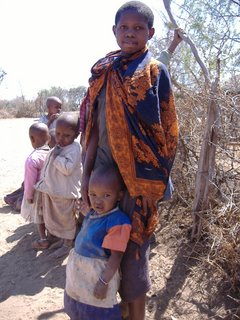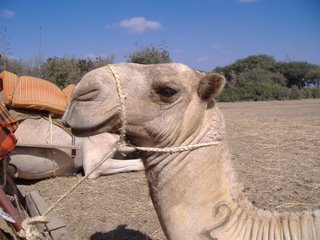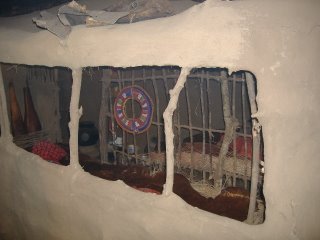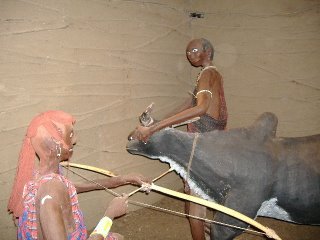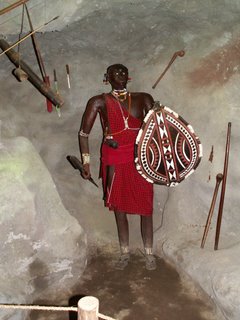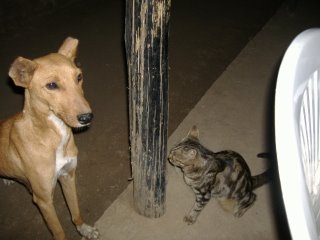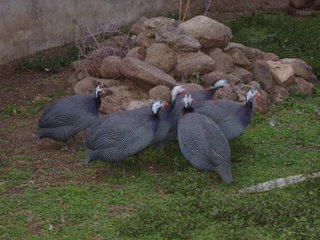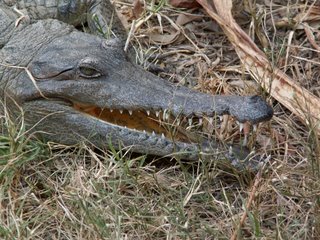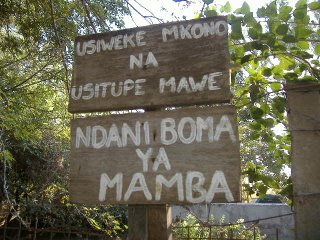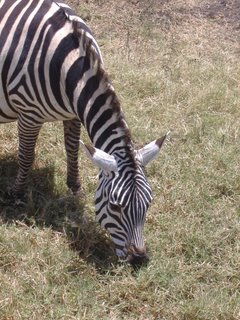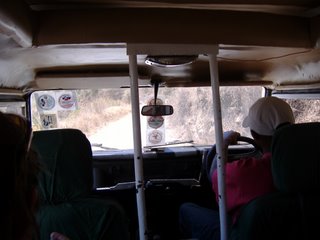Meserani Village Kids
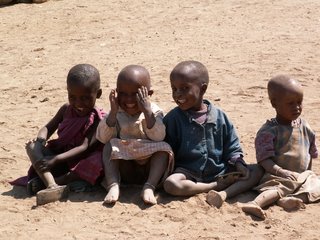 Arriving by camel, we were greeted by a crowd of giggling children.
Arriving by camel, we were greeted by a crowd of giggling children.I had hoped to meet some children in Africa and I did here in this village in Tanzania near Arusha, meeting the twenty or so offspring of one large extended family.
If I understood correctly, all the children were the progeny of a single father and his seven or eight wives.
They lived in a collection of round mud houses thatched with grass and shared the space with a smattering of goats, chickens, and donkeys.
It was DUSTY. The children were covered in it. They didn't seem to mind, happily throwing themselves down on the ground to doodle with their fingers in the dirt.
"You're a mucky little pup!", I heard Vicki say to a child, laughing.
I am so used to wiping off dirty faces at the daycare where I work that my fingers itched to use a damp wash-cloth on them. But aside from the dust, they were pretty cute I have to say.

They were curious about our watches and other jewellery and some wanted to try on my hat. They peered at their little digital images in the window of my camera in delight. A few clambered onto our laps.
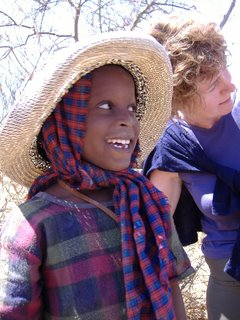
They were not shy at all, most of them. I believe that the children of this village see Westerners quite regularly as part of their village income stems from allowing tourists to come and photograph their homes and families.
Vicki and I gave some of the littler ones horsey rides on our lap and sang some little preschool songs with them. I showed them "A-Rem-Sem-Sem" which I sing with the children at the daycare back home because the words are nonsense words anyway and the actions are easy. The children grinned like crazy.
After a while, many of them wandered off and returned to their daily activities, many carrying younger children with them in their arms or on their backs.

They were dressed in a ragged and colourful mix of African sarongs and wraps and western T-shirts. One child even wore a barely recognizable garment from Baby Gap.

I couldn't help but compare them to the privileged children I know back home. Not a single plastic toy was apparent. No television. No video games. No playground equipment. No bicycles.
Just sticks, rocks, and siblings.
I wouldn't wish this kind of extreme poverty on any child I know, and yet I wonder if there is some sort of happy medium in between. Because I am almost positive these African children had something North American children are in short supply of: a longer attention span. I really enjoyed watching these children play!


Fascinated from a cultural perspective though I was, daycare worker instincts die hard, and I felt compelled to step into one game and unwind the string one little girl had tied tightly around her little sister's neck to lead her around.
Of course, as soon as I'd walked a little distance away, the string went back on again.

